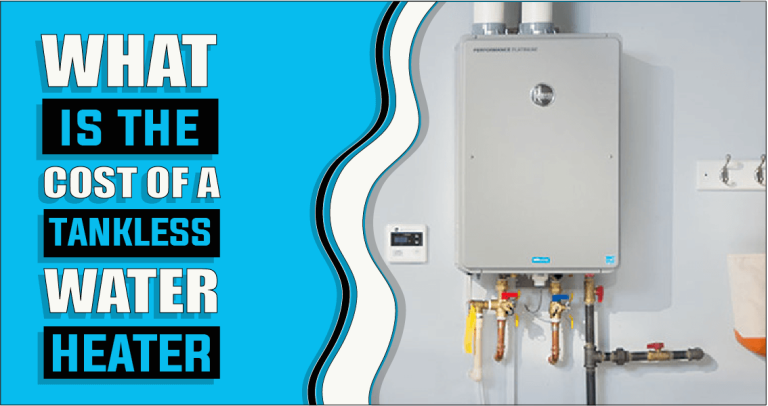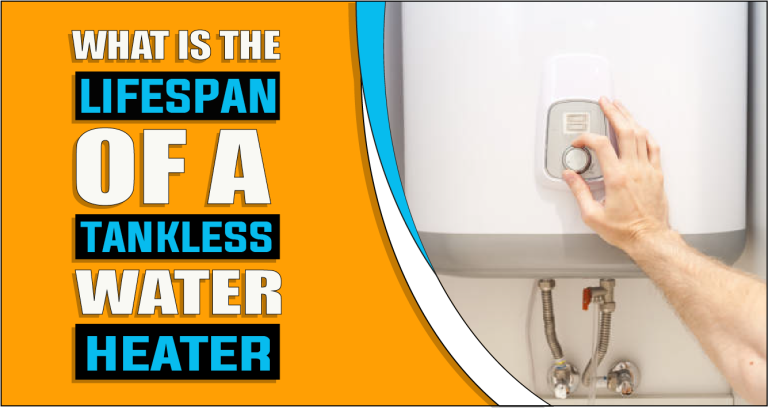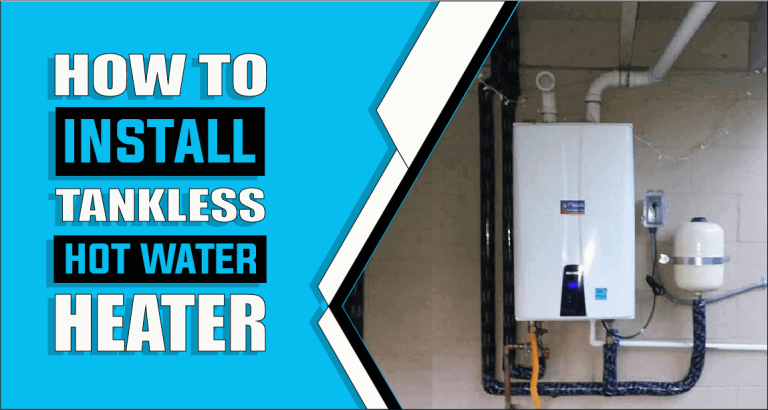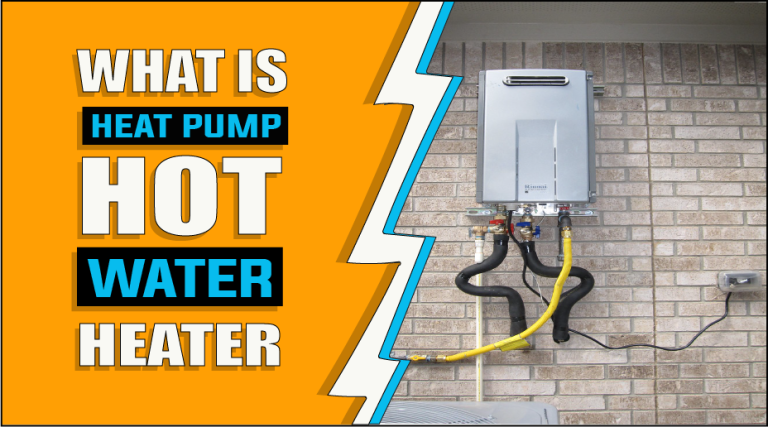What Size Tankless Water Heater To Replace A 50 Gallon – The Truth Reveals
Are you considering replacing your 50-gallon tank model with a tankless water heater? If so, you’re certainly not alone – many homeowners are making the switch and experiencing all that a tankless system has to offer. But before investing in this type of technology, it pays off to do your research on what size heaters will best accommodate your family’s hot water needs. In this article, we’re going over all the factors that you need to consider when replacing a 50-gallon traditional model with the efficient, space-saving option of a tankless one, from sizing requirements to energy savings, and answer the question: what size tankless water heater to replace a 50-gallon? So relax and read on as we explore how getting a tankless water heater could be your ticket closer to home efficiency upgrades!
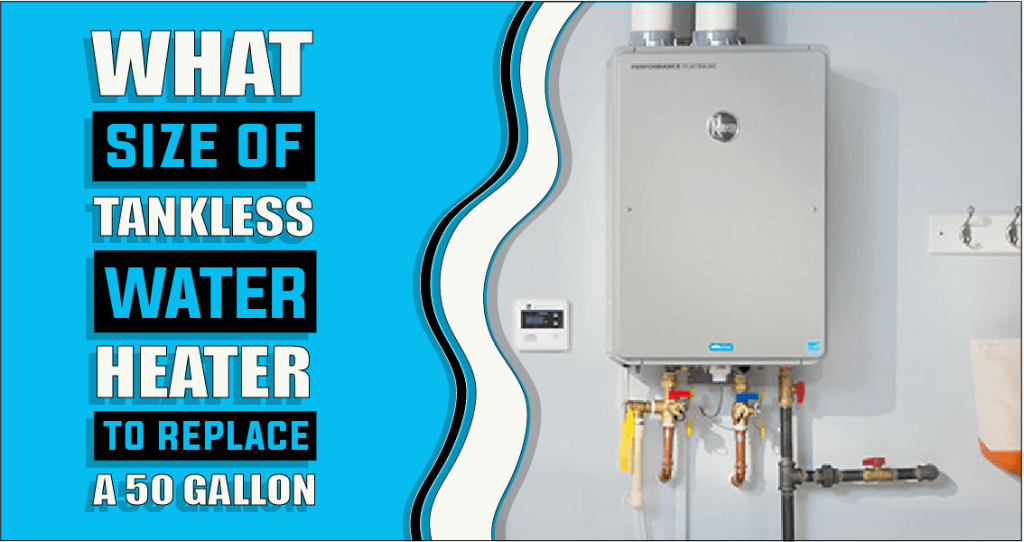
Let’s explore what size tankless water heater to replace a 50-gallon.
Replacing a 50-gallon tankless water heater is an important decision, as it can affect the overall efficiency of your hot water system. When selecting a new unit, it is important to consider factors such as the size of the space where the tankless water heater will be installed, the amount of hot water needed regularly, and the climate in which it will be operating. Additionally, you should also consider other features such as Wi-Fi connectivity, energy efficiency ratings, and whether or not you need a unit that offers multiple connections for larger installations. Each of these factors can have an impact on which type of tankless water heater is best suited for your needs.
Moreover, when determining the size of a tankless water heater to replace a 50-gallon unit, you must take into account both the size of your home and how much hot water you typically use daily. Tankless units are measured by gallons per minute (GPM). You will need around 7 to 10 GPM to replace a 50-gallon unit. In addition to this, certain climates may require different types of models due to temperature fluctuations in the summer and winter months. For instance, living in a colder region might require a higher GPM model or one with dual heat exchangers for better performance in extreme temperatures.
Benefits of Tankless Water Heaters
There are several major benefits to replacing a traditional water heater with a tankless system.
1: Increase in Efficiency
Tankless water heaters have plenty of benefits to make the decision easier. For one, they’re incredibly efficient. A tankless unit works by only heating water when it is needed, resulting in less energy waste. This makes them a great option for those who are looking to save on their energy bills.
2: Compact Size
Another advantage of a tankless unit is its compact size. These units are much smaller than tank water heaters so they can be installed in tight spaces or even on the outside of your home. This makes them perfect for those who don’t have enough room for a large tank model.
3: Cost Savings
Tankless water heaters can also save you money in the long run. They have a longer life span than traditional models and require less maintenance, which means fewer repairs over time. Additionally, their improved efficiency saves on energy costs, ultimately resulting in cost savings for you and your family.
4: Environmental Friendliness
Tankless water heaters are also eco-friendly. They can reduce your carbon footprint by using less energy and producing fewer emissions than traditional tank models, making them a great choice for those looking to do their part in protecting the environment.
Size Options for Tankless Water Heaters
When considering size options for tankless water heaters, there is a wide range of models to choose from depending on the household size and hot water needs.
1: Smaller Sized Tankless Water Heater
Smaller-size units are available in electric or gas models. These units have low flow rates and can typically provide up to 2-3 gallons of hot water per minute. They are suitable for one or two people with low demands for hot water.
2: Medium-sized Tankless Water Heater
Medium-sized tankless water heaters come in both gas or electric models and can provide up to 4-6 gallons of hot water per minute. These medium-sized units are suitable for households with 2-3 people who have moderate demand for hot water.
3: Large-sized Tankless Water Heater
Large-sized tankless water heater models can provide up to 7-10 gallons of hot water per minute. These large tankless models are suitable for households with more than three people who require high levels of hot water usage. They offer faster recovery times compared to medium-sized units and can easily supply multiple fixtures simultaneously without any loss in performance or efficiency.
Overall, when selecting a size model for a tankless water heater it’s important to consider the household size and demands of those living in it before making any decisions about which unit will best meet those needs. Smaller sizes are great for single-person households while larger sizes may be better suited for larger families or groups who need higher levels of constant access to hot water throughout the house at any given time.
What Size Tankless Water Heater Should Replace a 50-Gallon System?
Replacing a 50-gallon water heater with a tankless system is an efficient way to save energy and money in the long run. Here is a quick guide if you want to install a new tankless water heater to replace your existing 50 gallons.
- Replace it with a 4.5 GPM tankless water heater if your family is only 2 or 3.
- A 6.5 GPM unit will work for your family of three to four.
- A tankless water heater with at least 8.5 GPM is required if you have a family of 4 or more.
Furthermore, if you also have hot water-intensive appliances in your home like large bathrooms, a jacuzzi hot tub, and a laundry machine then a 10 GPM tankless unit will be the option to go.
However, there are a few strategies and ideas to help you calculate the ideal tankless water heater size that will replace your 50-gallon unit and meet your hot water needs without wasting any energy.
1: Size of the tankless water heater equivalent to a 50-gallon unit
Figuring out what size tankless water heater is equivalent to a 50-gallon unit can be tricky, as it requires understanding the differences between the two types of heaters. Generally speaking, tankless water heaters provide hot water on demand and are more energy efficient than traditional tank storage water heaters. The amount of hot water that can be produced by a tankless unit varies depending on the size and capacity of the particular model, but in general, a single-point tankless unit with at least 4 GPM (gallons per minute) of flow rate is typically equivalent to a 50-gallon storage tank unit.
Example
Let’s look at the Rinnai RL75iN Natural Gas Tankless Water Heater. This model has a maximum flow rate of up to 7.5 GPM and is suitable for use in medium-sized homes with up to five bathrooms. According to Rinnai’s technical specifications for the RL75iN, this model can produce up to 7 gallons per minute (GPM) of hot water at 35 degrees Fahrenheit rise, which is equivalent to a 50-gallon storage tank unit.
2: Knowing The Temperature rise
Just as with traditional storage tanks, there are other factors that should also be taken into consideration when determining what size tankless water heater is equivalent to a 50-gallon unit.
These include the temperature rise required from your inlet temperature, as well as desired outlet temperature.
- Inlet Temperature:
Imagine that you reside in a chilly area. Your local groundwater is 45 degrees Fahrenheit warmer than average.
- Desired Outlet Temperature:
This is how much you need the temperature of hot water to be. Naturally, you’d like to soak in a warm, comfy bath, perhaps one that’s 105 degrees. You want the water to be at this temperature.
- Calculation:
Your incoming cold and desired outlet temperatures are 45 and 105 degrees Fahrenheit respectively.
So, Temperature Rise = 105-45 = 60 degrees Fahrenheit
The greater the temperature rise, the more powerful a tankless water heater you will need. A 4 GPM unit can achieve a 35-degree rise, while an 8 GPM can manage 55 degrees or more.
3: Knowing Fixture Flow Rate
Another important factor to consider is the flow rate of the fixtures. This is simply how much water each individual fixture or appliance in your home will require to work properly.
The following may be present in your home:
- A faucet
- A showerhead
- Laundry equipment
The flow rate varies for each as we have written above. Add up the GPM of each fixture and you will get the total hot water flow rate which is 5.5 GPM.
4: Knowing The Tankless Unit Spec.
Given that you already have your numbers, this portion ought to be simple. To sum up:
- As the temperature rises, T becomes 60 °F.
- 5.5 GPM is the total hot water flow rate (gallons per minute).
Typically, a tankless water heater will rate you as follows:
- at 40 °F, 8 GPM
- 7 GPM increase at 50 °F
- 6 GPM increase at 60 °F
- 5 GPM increase at 70 °F Rise
For instance; 8.4 GPM at a rise of 40 °F.
This indicates that you may get 8.4 gallons of hot water every minute from the water heater. That is if all you need to do is elevate the water’s temperature from 45 to 40 degrees that is by 95 degrees Fahrenheit.
Summarily, to determine what size tankless water heater is equivalent to a 50-gallon unit, you need to take into account the temperature rise required from your inlet temperature and desired outlet temperature, as well as the fixture flow rate. In general, a single-point tankless unit with at least 4 GPM of flow rate is typically equivalent to a 50-gallon storage tank unit. However, this can vary depending on your specific requirements. So it is always best to consult an experienced professional about what size and type of tankless water heater are right for your needs.
Installation Of Right Size Tankless Water Heaters to Replace a 50-Gallon
Installing a right-sized tankless water heater to replace a 50-gallon traditional model can be a great way to save money while still enjoying hot water on demand. The process requires some technical knowledge and taking extra safety precautions, but with the right preparation, replacing your system can be done in just a few simple steps.
- Turn Off the Power
First, turn off the power source to your current water heater by flipping the breaker switch or turning off the gas valve.
- Disconnect Existing Unit
Once this is done, you’ll need to disconnect the existing tank from its cold-water supply pipe and then drain it completely before removing it from the area.
- Measure Space for New Unit
Then you will need to measure the space for your new tankless water heater and any venting that may be necessary for installation.
- Begin Installation
After selecting your new tankless unit it’s time to begin the installation. This involves connecting it properly to both the gas line and cold-water supply line.
- Make Secure Connections
To ensure proper operation of your system, use only approved pipes and fittings and make sure all connections are sealed tightly with Teflon tape or plumber’s putty.
- Double Check Connections
Once all connections have been made and tested for leaks you should check that all pilot lights or electronic ignitions are lit correctly before powering up your new unit.
- Make Final Temperature Adjustments
Finally, adjust the temperature setting on your new water heater according to manufacturer instructions so that you enjoy hot water whenever you desire!
Important Factors to Consider When Purchasing a Tankless Water Heater
When purchasing a new tankless water heater system, it’s important to keep in mind some important factors.
- Compare different sizes and brands of tankless water heaters to determine the most cost-effective option for your home. The right size and type of system can save you money on installation costs, energy bills, and maintenance efforts in the long run.
- Installation costs can vary greatly from one system to another. Be sure to factor in any necessary electrical upgrades or gas line modifications for your particular setup.
- Regular maintenance is required for all tankless water heaters to ensure proper operation and efficiency over time. Read the manufacturer’s guidelines carefully to determine the best way to keep your system running in peak condition.
- Finally, consider the long-term savings on your utility bills due to the lower operating costs and increased efficiency of a tankless water heater system.
Frequently Asked Questions
Yes, you can use a tankless water heater to replace your 50-gallon water heater with the right GPM rating for your home’s needs.
You would, approximately speaking, need a 10 GPM gas tankless heater or at least a 27 kW electric tankless water heater to replace a 50-gallon water heater. a minimum of an 18 kW electric tankless water heater or a 7 GPM gas tankless water heater.
If you choose an oversized tankless water heater, it will run too hot and may cause damage to your pipes and other components. It is important to size the water heater correctly for your needs before purchasing.
In addition to the cost of the tankless water heater itself, you may need to upgrade your electrical system or add a gas line for installation. Additionally, factor in regular maintenance as part of your long-term budget.
Yes, you may need specialized tools and equipment such as pipe wrenches, Teflon tape, and other materials to properly install your new tankless water heater system. Contact a professional plumber if you don’t have the necessary tools or experience to complete the installation safely.
The most notable benefit of replacing a 50-gallon water heater with a tankless model is the savings of both space and energy. Tankless water heaters are much more efficient than their traditional counterparts, providing hot water on demand while using significantly less energy.
Conclusion
We hope you have found this article helpful in answering the question: what size tankless water heater to replace a 50-gallon? The correct size tankless water heater to replace a 50-gallon hot water tank is approximately 10 GPM for gas models and 27 kW for electric. Careful planning and research should be done before making the purchase, as installation costs, electrical upgrades, and necessary maintenance efforts may vary greatly from one system to another. Investing in a tankless water heater can provide significant long-term savings while delivering hot water on demand with greater energy efficiency. With proper sizing, installation, and regular maintenance of your new tankless water heater system, you will soon enjoy all the benefits it has to offer!
Ella John is passionate about helping her readers make the best choice when purchasing a heater. She understands that selecting a heater can be difficult and strives to provide information to help make the decision easier. Ella’s website, Heatersinfo.com, provides valuable insight into heating trends and types of heaters and tips on how to care for them. She also advises selecting the right heater based on individual needs and preferences. Her expertise in electronics makes her an excellent source of knowledge, and she is confident that anyone who visits her website will find the perfect heater information for their needs. Ella’s dedication to helping others make educated decisions about buying the right heater is unparalleled, and she hopes to continue offering her expertise for many years. With Ella’s help, finding the perfect heater can be a breeze!

